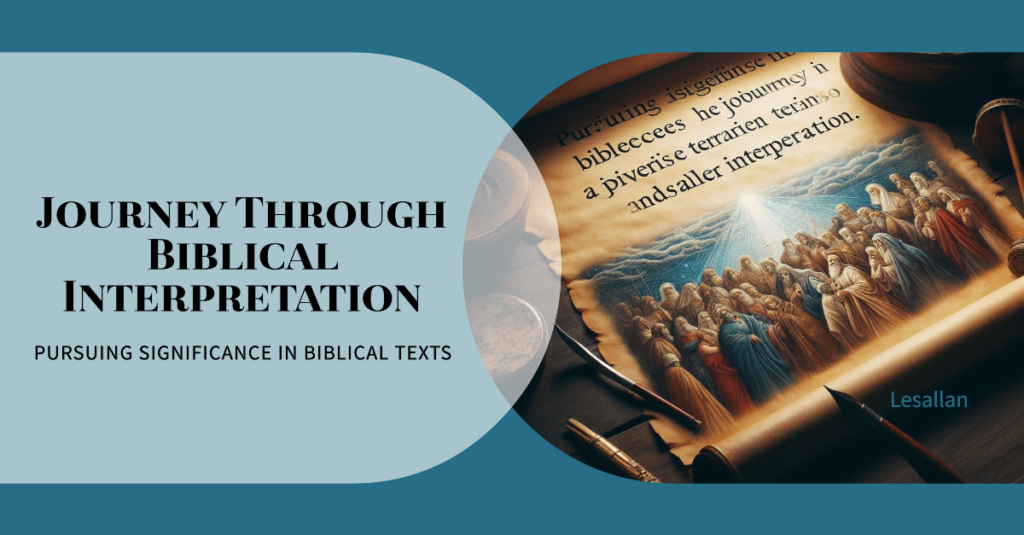Written by Lesallan – April 9, 2024
Ohio Christian University
BIB2025 New Testament Interpretation (ONLSP24)

Unraveling Biblical Meaning: The Interplay of Author, Text, and Reader
Pursuing significance in Biblical texts necessitates a journey through diverse terrains of interpretation. As per Brown’s (2007) classification, these terrains can be broadly grouped into three categories: the author, the text, and the reader. This tripartite framework provides a valuable lens for examining the multifaceted nature of Biblical interpretation.
The author-centered approach posits that the meaning of a text lies in the author’s intent. This approach’s strength lies in its respect for the author’s authority and its focus on historical and cultural contexts that shaped the author’s perspective. However, it has a significant weakness: it assumes that we can accurately discern the author’s intent, which may not always be possible or accurate (Brown, 2007).
The text-centered approach posits that the meaning of a text is inherent within the text itself, and is independent of the author’s intentions or the reader’s interpretations. This approach emphasizes the importance of analyzing the language, structure, and content of a text in order to uncover its meaning, rather than relying on extratextual factors such as the historical or cultural context in which the text was produced. Proponents of this approach argue that by focusing exclusively on the text, one can arrive at a more objective and reliable understanding of its meaning. This approach’s strength is its focus on the text’s structure, the genre, and internal coherence. Its weakness, however, is that it can lead to a neglect of historical and cultural contexts and the potential richness of reader responses (Brown, 2007).
Lastly, the reader-centered approach suggests that the reader constructs the meaning of a text in the act of reading. This approach values the diversity of readers’ responses and their personal engagement with the text. However, its weakness is that it can lead to a relativistic understanding of meaning, where any interpretation is as valid as any other (Brown, 2007).
Brown (2007) presents a “chastened” model of interpretation, which I find compelling. This model acknowledges the roles of the author, the text, and reader in the interpretive process but argues for a nuanced author-centered model. It recognizes that while the author’s intent is important, the text and the reader also play crucial roles in constructing meaning.
The Bible, uniquely, has both divine and human authors. This dual authorship should impact our interpretation within an author-centered model by prompting us to consider the human author’s historical and cultural context and the divine author’s transcendent truths. We should strive to understand the human author’s intent while also seeking the divine author’s timeless truths that speak to all generations (Brown, 2007).
In summary, searching for meaning in Biblical texts is a complex process involving the interplay between the author, the text, and the reader. While each approach has its strengths and weaknesses, a nuanced author-centered model, as Brown (2007) proposed, offers a balanced and respectful way to engage with the Bible.
In Christ,
Lesallan
References:
Brown, J. K. (2007). Scripture as communication: Introducing biblical hermeneutics. Baker
Academic.


